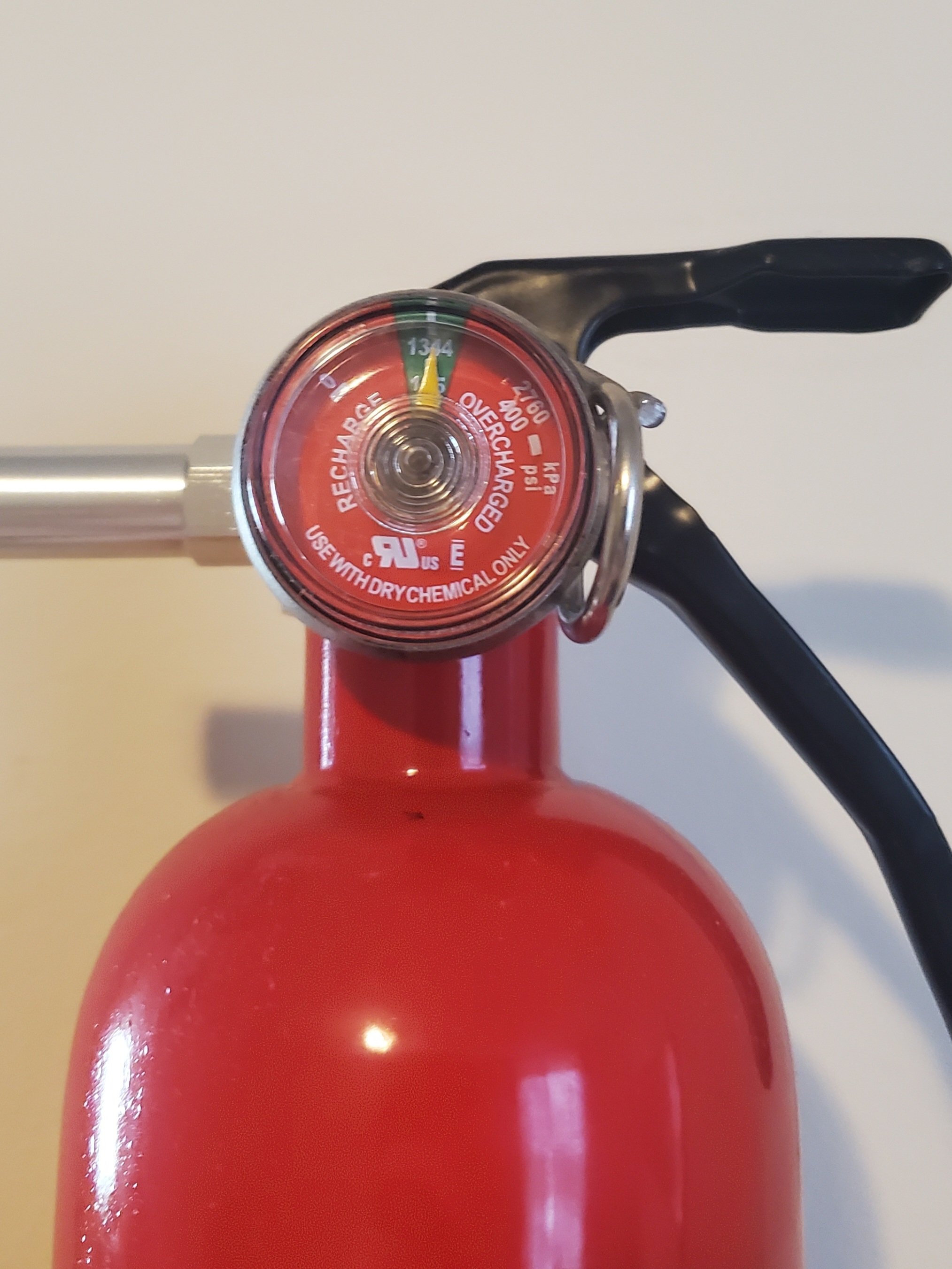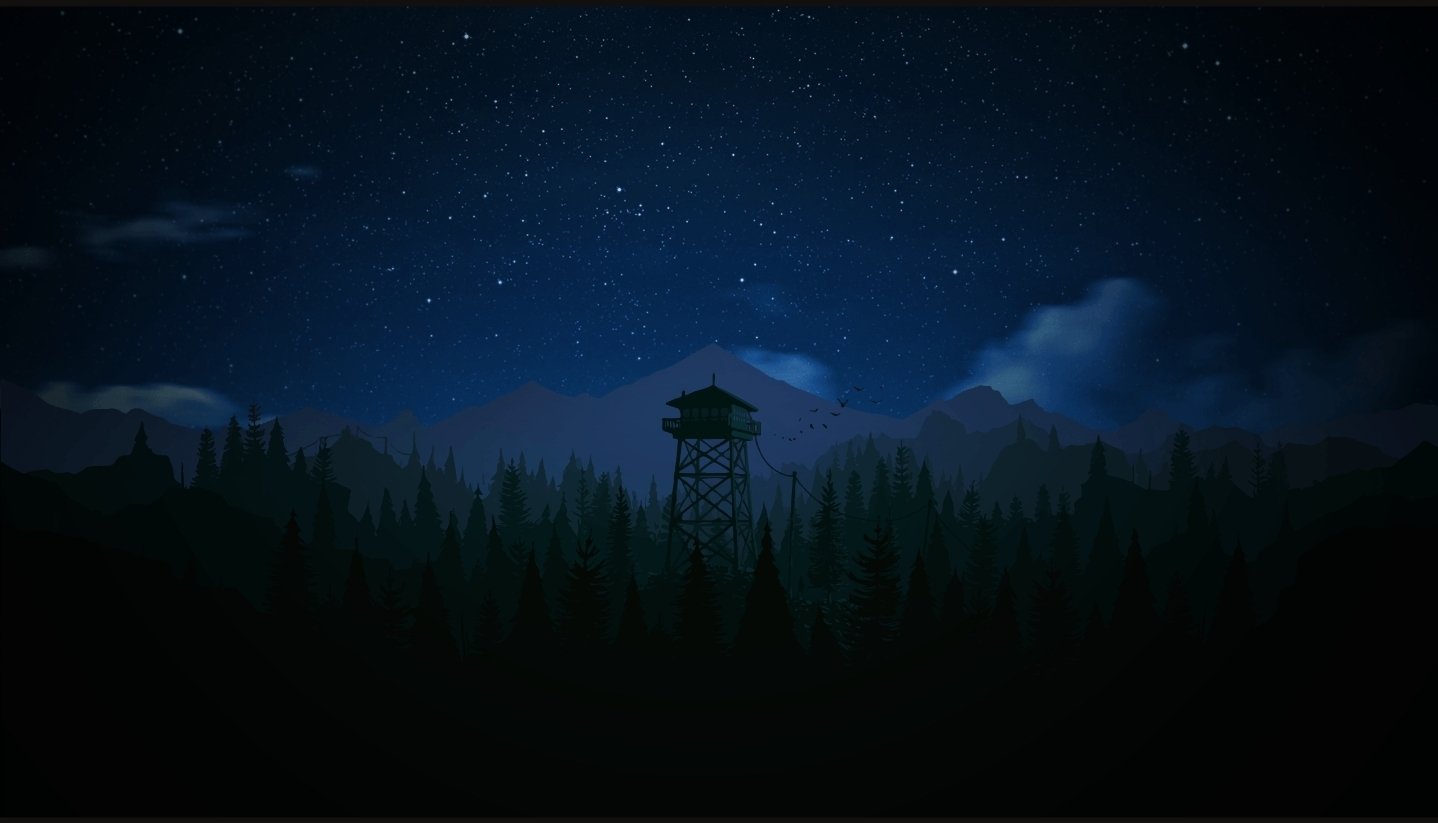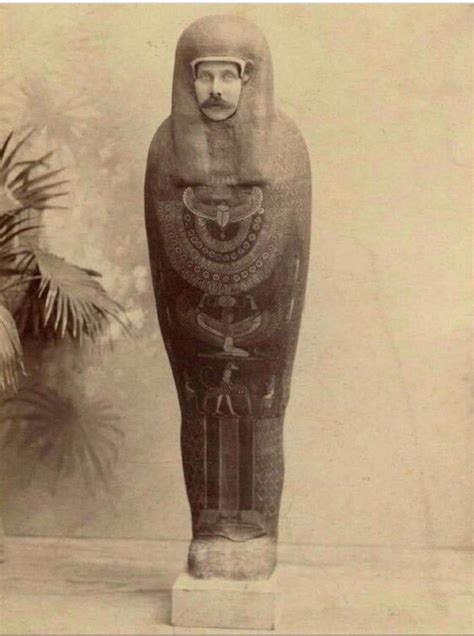
Yes I have 2 of them.
FYI you should turn over each of your fire extinguishers at least once every 6 months to keep them working right. That means pick it up, rotate it upside-down, and let the stuff inside slide to the top, then turn it back over. I learned this from a fire inspector that I had to guide through a datacenter once.
It really depends on the kind of fire extinguisher as to whether that matters. That said, my understanding is that if it is a dry powder that has settled it would be visible on the pressure gauge.
Really, that is about actually checking the pressure gauge every six months. If you tell someone to look, they never will. If you tell someone they have to do something, they might. Its the same logic behind “testing” a smoke alarm. The electronics are simple enough that you would REALLY need to try to damage them (and they are set up to piss you off with incessant beeping when failing anyway). But by pushing the button every six months, you actually check if there is a battery in it and so forth. Rather than hearing it beep in the morning, telling yourself you’ll fix it when you get home, and never doing so.
How does powder settling affect a pressure gauge? There has been no change to the internal pressure of the vessel, the change loose vs compacted powered will not change the volume of materials inside the extinguisher. The only way the pressure should change is if there’s a leak.
It very much depends on the specific materials which is why it is a “let’s not get into this and just say ‘better safe than sorry’” situation but: Even if the powder is settled, it is going to almost immediately get kicked up and re-mixed once you start spraying. Probably don’t test this for yourself for obvious reasons, but that is why a “fresh” can of spray paint will basically always work. It might not be even for the first few sprays but it rapidly becomes even.
Over simplifying (because molecular dynamics and shit) but think of it like a really crowded room. You basically can’t sit down, let alone lie down, if it is crowded enough. And even if you try, someone will nudge you (or kick you) and you will get going.
As the pressure decreases, the settled powder is less likely to be disturbed and you are more likely to wake up from your nap wondering why nobody else is waiting for the new Star Wars with you. And that is why paint cans have the shaker and so forth.
So if your fire extinguisher has settled/compacted to the point that it is not viable? It is almost guaranteed to be because of a pressure leakage and that would be reflected on the gauge.
Now, there is probably some variant where this can happen regardless. But that would be a bad product anyway because these need to work even if nobody can ever be bothered to find the key to the glass box.
Your logic is not correct. Powder and people are not the same. Volume is volume, and particles of fire retardant are not changing size or quantity. If pressure drops substantially in an extinguisher, it’s leaking.
A can of fresh spray paint works because the seals are all still good and the nozzle isn’t clogged, and cans of used spray paint can leak out pressure or have the nozzle or other plumbing jammed up with dried spray paint.
You’re right, the pressure gauge shouldn’t change without a leak or temperature change (Boyle’s Law and such). But it’s hard to have a 100%, no-leak extinguisher. There’s plenty of points of failure to keep the thing pressurized, and the leak could be imperceptible (over months) or a rapid failure
And you wanna keep contents from settling as well, so you don’t just spray gas when trying to use it. So you mix it a bit and inspect the gauge every so often, because you don’t want it to fail when you need it most
Ideally, it shouldn’t lose pressure. But also ideally, you don’t have a fire that requires an extinguisher in the first place
But yes, you’re right on that one. “Settling” of the fire-retardent wouldn’t cause a pressure change. It’s just part of the safety inspection to check the gauge as well as to “mix” it… keeping it ready to go
It’s* the same logic
'Tis*
Those in the biz call it “fluffing” the FE.
TIL, thanks
I have 3. 2 are still pressurized. One was used last night.
A note to everyone…do your welding before you paint and undercoat, or at least wait for it to dry fully first.
Hope it all turned out ok! You’re posting so clearly you survived
Everything is fine. I was welding in the outer rocker when it ignited. It was a brief flash and then it went out. I only used the fire extinguisher because I saw smoke coming from the seatbelt hole near the top of the door. I figured better safe than sorry. Of course now the inside of the rocker that I can’t get to anymore is covered in white powder, but at least it’s kinda fireproof now.
Maybe I am just projecting here, but I believe the average Lemmy user to be too much of a nerd to be welding in their free time. Is it possible to be both Bonehead?
You’re projecting. I weld because I’m a nerd. This job is just helping out a buddy, but before that I was welding a new mount for my trailer hitch snow plow that I built a few years ago. And this summer I want to build a remote control lawnmower which is going to involve a lot of welding, plus some code to reprogram the hoverboards that I bought for that project. The real challenge there will be adding basic intelligence with a Raspberry Pi so that it will mow the lawn itself. But that’s a few years away, since I still need to build it first. And that starts with welding the frame.
It’s not really possible to be both, since one is merely a tool that satisfies the needs of the other. Nerd always takes precedence…
Piggybacking on this PSA to remind everyone;
- Attack the base of the fire, where the fuel source is. You need to break the fire triangle to stop the reaction, and drowning out oxygen is the easiest way.
- Each rated pound of fire extinguisher yields approximately one second of use. They go quickly when you’re fighting any fire, and even small fires fight back. 5lb is the minimum imo, look at any commercial setting where OSHA applies and it’s big 10-20lb tanks generally.
- Trainers advise to blow the whole extinguisher even if flames aren’t visible to prevent auto-ignition.
- You really, really want a hose on any extinguisher. Invert the extinguisher to get under a car/cabinet/low obstacle and the extinguisher is useless as the pressurized gas escapes, leaving behind the powder/foam/water that actually stops fire.
As a gift to my friends who were going to be first time parents, I bought them a pack and play, a first aid kit, and a fire extinguisher. They laughed at my fire extinguisher gift and told their other friends who also laughed.
Laugh all they want burning alive is a shit way to go. And you might have saved them from that fate.
Awh, that’s kind of crappy. I’m hoping they just took it as a gag gift; be prepared for anything, a bit like Jack Jack in The Incredibles.
I hope theynever have to use it, but I hope they do learn how important it is.
Same for cleaning dryer lint; before I was born the entire family who lived across the road from my mum perished in a house fire from dryer lint catching.
Also add Carbon monoxide detectors to that list of devices you never want to need, but should never be without
Dryer lint fires are so strange to me. Cleaning out the lint trap takes less than 5 seconds, and I do it with every load. I pulled the dryer hose off last weekend to clean it, and it was spotless, presumably because I clean the lint from the trap.
I have four fire extinguishers:
- One in the kitchen
- One in the basement
- One in my office (where I do stuff like soldering and 3D-printing)
- One mounted to the roll bar of my Miata (I ought to get some for my other cars, but haven’t gotten around to making mounting brackets yet)
However, I never would’ve thought to check them (or turn them upside down to “fluff” them) without this post, so thanks!
Followed by: do you have a functional fire extinguisher in your kitchen and can you reach it immediately?
Stove top fires are usually easy, just put a lid on whatever to put them out, but there’s always going to be someone who panics and dumps water on a grease fire.
Not too immediately. Take 3 steps back/towards the nearest exit, that’s where you want the extinguisher. Not right next to the stove that’s going to be on fire when you need to get to the extinguisher.
Keep in mind that a standard ABC extinguisher isn’t rated for grease fryers. If it’s just the fat needed to sautee something you’re good, but for an actual deep frying fire you want something in class K.
Absolutely it is one of these products that you probably never need. But when you do you are so happy you had it standing around.
I do routine inspections once a year when I do my fire alarm testing so every time I switch to daylight saving time.
Just caused an oil fire last week and fortunately it was working. I’ve since replaced also.
I’m a professional fire performer, so I have four :P
(Admittedly two need refilling)
Those years of safety training finally paying off:
Do you know what types of fires your fire extinguisher is rated for? There are several different types. Most modern home fire extinguishers are rated for A (wood/paper), B (liquids like oil fires), and C (electrical), but you may have an older fire extinguisher or landlord who cheaped out on one that only works on some of those types.
If you have a fire that’s based on metals (like fireworks) or exothermic chemical reactions, have a different fire extinguisher or call the fire department with special instructions.
Always remember the acronym PASS when using a fire extinguisher:
- Pull the pin
- Aim at the base of the fire
- Squeeze the trigger
- Sweep the fire extinguisher side to side to cover all of the fire till the fire is extinguished
If you have a fire that’s based on metals (like fireworks) or exothermic chemical reactions, have a different fire extinguisher or call the fire department with special instructions.
It ought to go without saying, but maybe not for some, so it’s worth pointing out that there’s a difference between a fire started by fireworks and one fueled by fireworks.
Great point! So if you have a firework that sparks some dry grass or brush, your home fire extinguisher will likely be fine as long as the fire doesn’t get too big before you can grab it.
However, if you have a hoard of fireworks that catch fire, you’re better off running and calling the fire department than trying to quickly put that out with your home fire extinguisher as it likely won’t work.
My extensive training has left me with the impression that yelling “SHORT BURST” and pointing at any red LEDs is equally important
Yup. We had one but after we had a smouldering fire in our outdoor trash can we got several for different points in the house. We also have escape ladders in the bedrooms.
After being directly adjacent to three separate apartment fires, we also have several fire extinguishers and escape ladders stashed around the apartment.
Fire blankets are good to have as well
Currently have 6. I need to get more, and larger ones. We live in a log house, in an area that takes a minimum of 20 minutes for emergency services to get to, and heat with a wood stove. We absolutely need to practice fire safety all the time.
Oh man, definitely get more!
That’s the idea. The really big ones get pretty expensive though; a 30# fire extinguisher starts at around $500, and can get up to about $1500. But that size gets you about 20-30 seconds of continuous use, which is enough for a pretty big house fire.
I have one that’s over 20 years old and it still shows proper pressure. I haven’t tested it, but I have replaced it.
I should start a fire…
Some times being able to start a fire is just as important for survival as putting one out.
My SO is really good at starting fires. She just says something, then stops and says never mind. Works every time.
Do they go bad even if they are still pressurized? I’m thinking they are nearly 20 years old now…
Yup. And you’re supposed to have a professional inspect them annually. You’re supposed to inspect them every month.
Good question.
Yes the dry powder type which is most common, can go “bad” usually from excessive moisture in the pressurization gas. This causes the powder to clump and no longer come out.
This can be prevented by inverting the extinguisher a few times a year to make sure the powder is still “fluid” and to break up any clumped up powder.
To tag on to all the good advice, you should DEFINITELY keep a decent sized fire extinguisher in your car as well. I’ve stopped one engine fire on a car not my own from spreading by having one. Pop the hood (if it’s safe to reach the latch) and unload that shit.
deleted by creator
I suppose I should clarify. Pop it but don’t fully unlatch it, then send the extinguisher up through the new gap between grille and hood so it actually gets on top of the engine. Thru the radiator and underneath is often ineffective as most fires will be sitting up on top of the engine where most wires and fuel lines exist.











